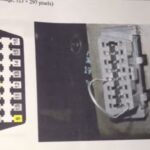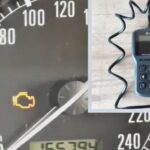The automotive aftermarket is rife with products promising miraculous improvements to your vehicle’s performance and fuel economy. Among these, the Nitro OBD2 chip tuning box stands out with bold claims of increased horsepower and torque simply by plugging it into your car’s OBD2 port. Advertised as a revolutionary “Chip Tuning Box,” it has garnered mixed reactions online, with some users praising its effectiveness while others denounce it as a complete scam. Intrigued by these conflicting “Nitro OBD2 pareri” (opinions), we at carparteu.com, decided to delve deeper and conduct a thorough reverse engineering analysis to uncover the truth behind this enigmatic device.
Our exploration into automotive security and CAN bus systems led us to investigate consumer-grade OBD2 devices. When a friend brought the Nitro OBD2 to our attention, questioning its legitimacy, we knew we had to investigate. We purchased a Nitro OBD2 from Amazon to dissect it and determine if it lived up to the hype or was just another automotive myth. Unable to leave a detailed review on the sales platform, we present our comprehensive findings in this blog post.
Initial Inspection: Peering Inside the Dongle
Before even considering plugging the Nitro OBD2 into a vehicle, our professional curiosity as auto repair experts compelled us to examine its internal components. Opening the dongle revealed a standard OBD2 connector interface. The pinout configuration was as expected for an OBD2 device:
Our initial check focused on verifying the connections to the CAN High (CANH) and CAN Low (CANL) pins, crucial for communication in modern vehicles. Fortunately, these pins were indeed connected, alongside pins for J1850 and ISO 9141-2 protocols. This confirmed basic connectivity, but the circuit board itself revealed a more simplistic picture:
The internal layout was surprisingly basic, comprising:
- A straightforward power circuit.
- A push button, seemingly for cosmetic purposes.
- A single, unidentifiable chip.
- Three LEDs, presumably for visual feedback.
Notably absent was a dedicated CAN transceiver chip. This raised immediate skepticism. For the Nitro OBD2 to function as advertised – monitoring driving habits, reprogramming the engine control unit (ECU) for performance gains or fuel efficiency – it would require sophisticated processing and, crucially, the ability to communicate effectively over the CAN bus. This functionality would need to be condensed into that single SOP-8 package chip, or the device was fundamentally incapable of doing what it claimed. The simplicity of the board design already suggested the latter.
CAN Bus Communication Analysis: Listening for Signals
To ascertain if the Nitro OBD2 actually interacts with the vehicle’s systems, we proceeded to monitor its CAN bus activity. Our approach was to record CAN bus traffic both with and without the device plugged in and compare the data for any anomalies or new transmissions originating from the Nitro OBD2.
For this test, we utilized a 2012 Suzuki Swift diesel, a vehicle known to be compatible with standard OBD2 diagnostic tools like ELM327 and software like Torque. This car provided a known baseline for CAN bus communication. Our monitoring setup consisted of a Raspberry Pi equipped with a PiCAN2 shield and utilizing a Python script adapted from https://github.com/P1kachu/python-socketcan-monitor to capture CAN bus data.
The initial setup to monitor CAN messages directly from the OBD2 port looked like this:
To further validate our setup, we employed a PicoScope to visualize the CAN signals, confirming the presence of expected CAN_H and CAN_L waveforms.
With a working CAN bus monitoring system in place, we moved to the next step: capturing CAN traffic with the Nitro OBD2 connected. Due to the single OBD2 port in the test vehicle, we ingeniously integrated our monitoring tool directly into the Nitro OBD2 device. We carefully opened the Nitro OBD2 enclosure and soldered wires to the Ground, CAN_High, and CAN_Low pins on the internal PCB. These wires were then connected to our Raspberry PiCAN2 interface, allowing us to sniff CAN bus traffic while the Nitro OBD2 was simultaneously plugged into the car’s OBD2 port.
Communication Test Results: Silence from the “Tuning” Box
Analyzing the captured CAN bus data revealed stark differences – or rather, a lack thereof. The first image displays the normal CAN bus traffic of the Suzuki Swift without the Nitro OBD2 connected:
The subsequent image shows the CAN bus traffic recorded with the Nitro OBD2 plugged in:
A direct visual comparison immediately reveals a critical finding: no new messages or communication signals appear on the CAN bus when the Nitro OBD2 is connected. The traffic patterns remain virtually identical in both scenarios.
This conclusively demonstrates that the Nitro OBD2 does not transmit any data onto the CAN bus. Instead, it passively observes the existing CAN_H and CAN_L signals, likely to detect general CAN activity and trigger the blinking LEDs, creating a false impression of activity. It is not actively communicating with the vehicle’s ECU or any other system on the CAN bus.
Chip Examination: Deconstructing the Brain
Having established the Nitro OBD2’s lack of CAN bus communication, we turned our attention to the mysterious single chip housed within the device. Since the chip lacked any markings or identification, we resorted to chip decapping to reveal its internal structure. After carefully exposing the die using sulfuric acid at 200°C, microscopic examination revealed the chip’s architecture:
In the decapped chip image, we could identify basic microcontroller components like RAM, Flash memory, and the CPU core. However, there was no evidence of any specialized hardware, such as an integrated CAN transceiver. It appeared to be a standard, general-purpose microcontroller, not a custom or specialized chip designed for automotive communication or engine tuning.
To further emphasize this point, we compared the Nitro OBD2 chip to a decapped TJA1050, a common and readily identifiable standalone CAN transceiver chip:
The stark difference in design and complexity is immediately apparent. The TJA1050 CAN transceiver exhibits a distinct architecture optimized for CAN communication, which is completely absent in the Nitro OBD2 chip. Furthermore, the physical size and complexity of a CAN transceiver IC would simply not fit within the die area of the Nitro OBD2’s microcontroller. This strengthens our conclusion: the Nitro OBD2 chip does not incorporate a CAN transceiver and is fundamentally incapable of communicating on the CAN bus.
Addressing Counterarguments: The Devil’s Advocate
Despite the overwhelming evidence pointing to the Nitro OBD2 being ineffective, we considered potential counterarguments to ensure the robustness of our findings and address any lingering “Nitro OBD2 pareri” suggesting otherwise.
One common claim is that the Nitro OBD2 requires an extended “learning period,” often cited as around 200 kilometers of driving, before its effects become noticeable. However, our CAN bus monitoring was conducted over a reasonable driving duration (15km) and conclusively showed no CAN communication from the device at any point. If the device isn’t communicating, it cannot be “learning” or influencing the ECU.
Another point to consider is the possibility of the Nitro OBD2 using existing arbitration IDs on the CAN bus, effectively “piggybacking” on legitimate ECU communication. While theoretically possible, this approach would be highly problematic and disruptive. Injecting messages using existing IDs would likely interfere with genuine ECU communication, potentially causing malfunctions and error codes. Furthermore, it’s an incredibly inefficient and unreliable way to attempt any form of engine tuning.
Alternatively, the device might passively monitor broadcasted CAN messages without actively querying the system. This scenario would require the Nitro OBD2 to possess an incredibly comprehensive and universally applicable understanding of every conceivable CAN message across countless vehicle models to interpret driving habits and engine parameters. This level of sophistication within such a simple and inexpensive device is highly improbable, bordering on absurd. Even if it could passively listen, without the ability to actively request specific data via standard OBD2 PIDs, its ability to accurately assess driving style or engine load would be severely limited.
Crucially, the lack of a CAN transceiver remains the definitive technical limitation. Without the hardware necessary to transmit on the CAN bus, the Nitro OBD2 is fundamentally incapable of sending any tuning commands or modifications to the ECU, regardless of any theoretical software capabilities.
Conclusion: A Fuel Purchase is a Better Investment
Our comprehensive reverse engineering analysis, encompassing PCB examination, CAN bus monitoring, and chip decapping, leads to an unequivocal conclusion: the Nitro OBD2 chip tuning box is a deceptive product that does not deliver on its performance enhancement claims. It is not capable of communicating with the vehicle’s ECU in any meaningful way and functions solely as a placebo device with blinking LEDs to create a false impression of activity.
As one insightful Amazon reviewer aptly stated: “Save 10 bucks, buy some fuel instead.” Indeed, investing in actual vehicle maintenance or even premium fuel would be a far more effective way to improve your car’s performance and efficiency than relying on this “chip tuning” gimmick. For those seeking genuine performance enhancements, legitimate ECU tuning performed by qualified professionals remains the only credible path.

